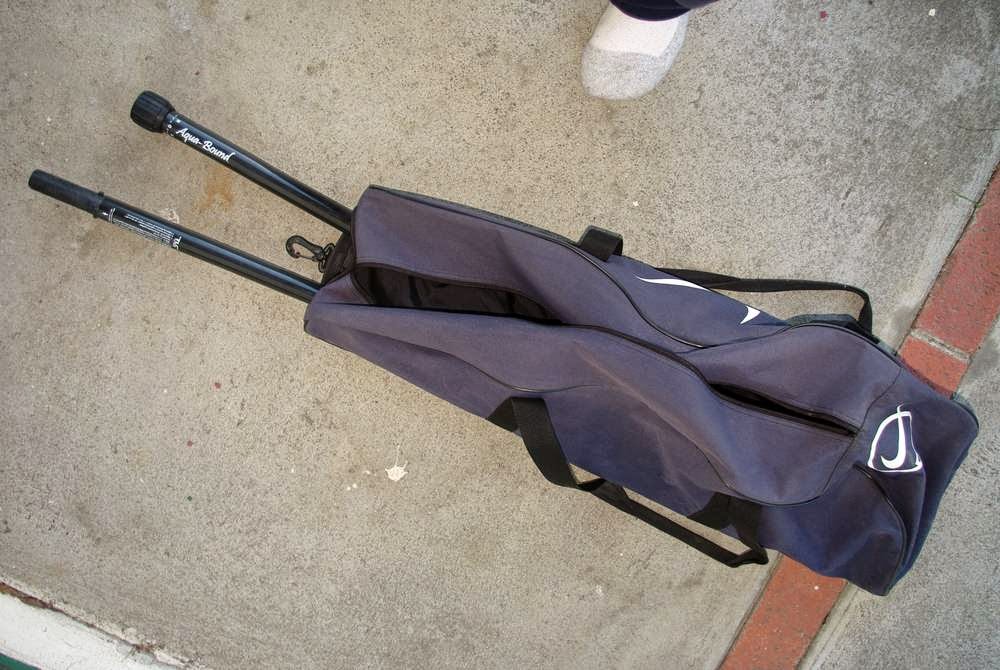A year ago Richmond's
Point Molate Park re-opened after being closed for 10 years. I want to launch there sometime before the summer winds come back, and maybe paddle the length of the bridge. I couldn't find any real information about paddling there, so I stopped at the park when I had a chance to see what it's like.
The short short version is: you can use the park during daylight hours and launch from a sand beach, which may be hard to do when it's windy or when the water's low. No fees, no running water. It's near the freeway and easy to get to.
 |
| Accessible grill |
 |
| Not very high, but steep enough to be a problem. |
 |
| Kayak-resistant fence. |
 |
| Wreck to the south of the park. |
Pt. Molate park is about a mile and a half north of the Richmond-San Rafael Bridge Toll Plaza. Park features are:
- no entrance fee
- open sunrise to sunset
- no swimming, no fishing allowed
- lots of room to park
- restroom facilities are limited to one wheelchair-accessible latrine
- no running water
- several picnic tables in good condition and a small iron barbecue-grill-on-a-stick near each one
- no lawn, and there's a lot of bare dirt, but there is some kind of springy turf in places and not too many weeds
- trees, but little shade on the parking lot
- blackberries - I saw a few blackberry vines, but didn't notice if there were blackberry thickets around
- large sand beach with a short, steep bluff along most of it's length.
 |
| The shore at Pt. Molate. |
The easy place to put the boat in: there is a gravel path about halfway between the park entrance and the latrine. It leads from the parking lot to some railroad-tie steps that go down to the beach. There is a sort of fence-lined walkway between the rest of the parking lot and the park that allows you to walk into the park but makes it difficult to bring anything bulky (like a kayak) with you, and the three-or-four foot high bluff will make it hard to get the boat to and from the water.
 |
| The gravel path is on the left before the sign. |
 |
| Steps at the end of the gravel path. |
The tide would have been at around 3' to 5' high when I was there, so I couldn't tell if launching at low tide would be a problem. I suspect the bay adjacent to Pt. Molate turns into a mud flat when the water's really low and that it would be better to
go to a nearby site to launch, especially when the summer westerlies are working.
 |
| The far end of the parking lot. |
 |
| The shore just north of the park. |
You probably won't encounter many small boats in this area, but there are the usual ships, ferries, and tugs to avoid. I
think the westerly wind and swells probably come onshore from the south-west, so it seems like kite boarders and windsurfers might want to use the place, but perhaps they are kept out by the "no swimming" rule.
Things to see on the water:
 |
| Panoramic view of the bridge from Red Rock. Point Molate would be on the other side of the bridge on the far right of this image. |
There are pretty views of the bay, the bridge, Mt. Tam, etc. from Pt. Molate. The close scenery isn't all that pretty but it can be interesting - there are old wrecks and ruins, and abandoned wharves, for instance.
 |
| The bay around Pt. Molate. |
 |
| Satellite view of the park, used without permission. |
Getting to the park from the east bay is easy. Exit i-580 west-bound just before the toll plaza and follow Stenmark Drive, and watch the signs. Coming from the Marin side you probably have to exit at Pt. Richmond and then get back on the freeway west bound.
I'll try to make some kind of meaningful update to this entry when I finally get around to launching there.















































